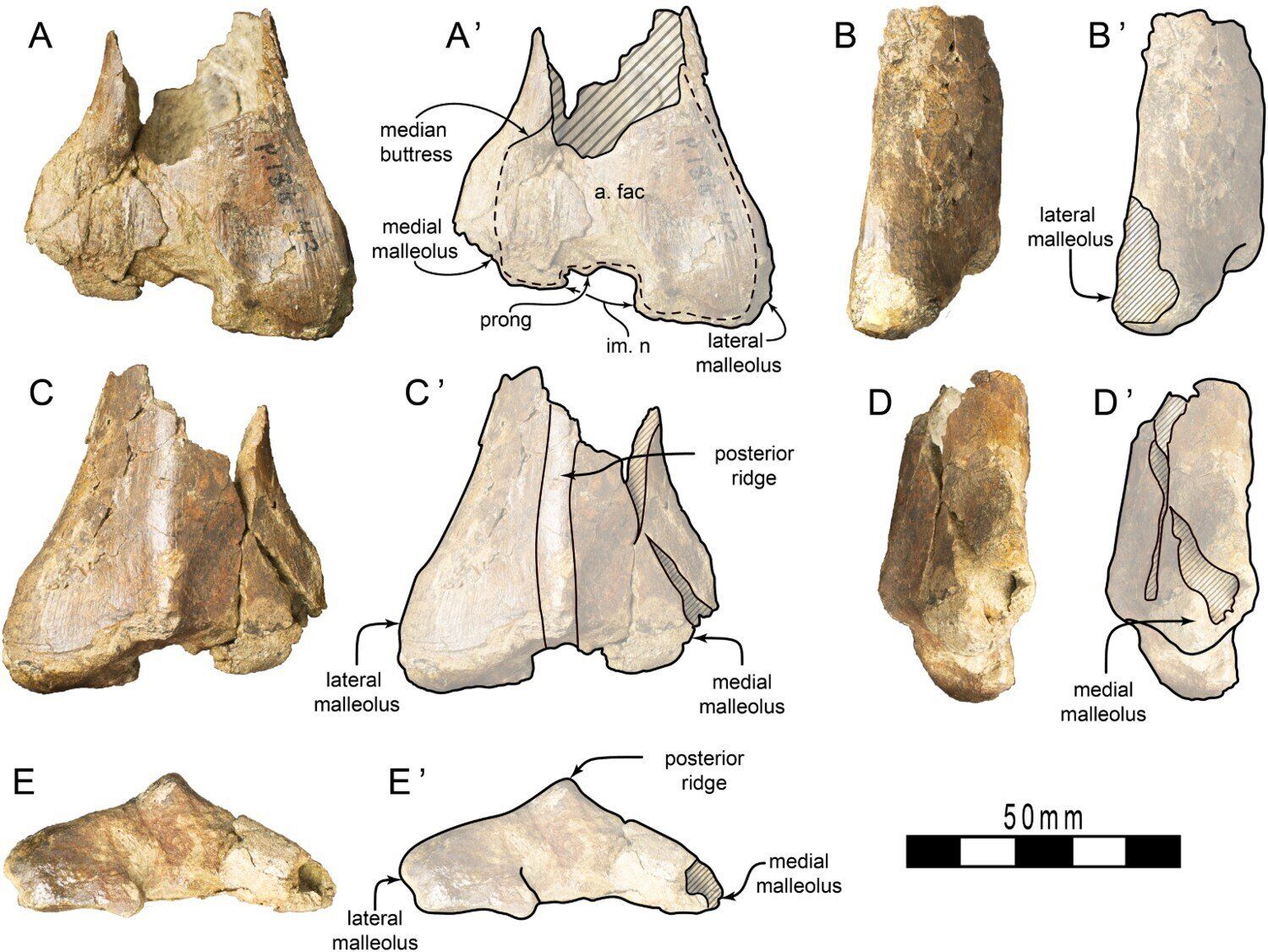Discovery of a new Australian dinosaur, and the oldest megaraptorid in the world 🦕
Published by Cédric,
Article author: Cédric DEPOND
Source: Journal of Vertebrate Paleontology
Other Languages: FR, DE, ES, PT
Article author: Cédric DEPOND
Source: Journal of Vertebrate Paleontology
Other Languages: FR, DE, ES, PT
Follow us on Google News (click on ☆)

Cretaceous Australia landscape.
Credit: Jonathan Metzger, Museums Victoria
These fossils, excavated along the Victorian coast, date back to the Cretaceous period, between 121 and 108 million years ago. They offer an unprecedented glimpse into the ecosystem of that time. Powerful megaraptorids, reaching up to 23 feet (7 meters) in length, coexisted with smaller carcharodontosaurs (6.5 to 13 feet or 2 to 4 meters) and agile unenlagiines, the "raptors of the south."
A surprising predator hierarchy
The presence of carcharodontosaurs in Australia is a real surprise for paleontologists. These dinosaurs, which ruled in South America, reached impressive sizes, up to 43 feet (13 meters), far surpassing megaraptorids. However, in Australia, the roles seem reversed. Megaraptorids dominated, while carcharodontosaurs were smaller. This peculiarity highlights the uniqueness of the Australian ecosystem during the Cretaceous.
This discovery points to a divergence in predator evolution. Indeed, Australia, isolated from the rest of the world at that time, saw its own dinosaur species develop. Paleontologists are questioning the factors that favored this distinct evolution. Environmental conditions, prey availability, or competition between species are all avenues to explore.

Left tibia of an indeterminate Carcharodontosauria (NMV P186143) from the Upper Strzelecki Group, Victoria, Australia.
Photographs of the tibia in view:
A) Anterior
B) Lateral
C) Posterior
D) Medial
E) Distal
Credit: Journal of Vertebrate Paleontology
The absence of large carcharodontosaurs in Australia raises several questions. How to explain this size difference with their South American cousins? Paleontologists suggest that competition with megaraptorids, already well-established in Australian territory, may have limited their growth. Other factors, such as climate variations or the availability of certain prey, may also have played a role. Further research will be needed to fully understand this mystery.
Fossils that speak
Two of the fossils found are the oldest megaraptorids ever discovered. They provide a better understanding of the evolutionary history of this group and suggest that the Australian theropod fauna played a key role in the ecosystems of Gondwana. Gondwana was a supercontinent that included Australia, Antarctica, South America, Africa, and India.
These fossils testify to faunal exchanges between Australia and South America via Antarctica during the early Cretaceous. They challenge preconceived ideas about the hierarchy of body sizes among Gondwana predators. Australia, with its unique fauna, proves to be a true evolutionary laboratory.
The discovery of these fossils is the result of long-term work. Museum collections, often overlooked, turn out to be real mines of information. Specimens, preserved for decades, can reveal new secrets thanks to technological advances and current research. Thus, volunteers, such as Melissa Lowery who identified three of the fossils, play a crucial role in these discoveries.
To go further: What is a theropod?
Theropods are a highly diverse group of dinosaurs. They share some common characteristics. They are bipedal dinosaurs, meaning they moved primarily on their two hind legs. Most were carnivorous, but some became herbivorous or omnivorous during evolution. Their forelimbs were often shorter and could be used to grasp prey or for balance.
Theropods lived over a long period. Their fossils have been found on all continents. They existed from the Jurassic to the Cretaceous. This great diversity and their presence over a long period make them a fascinating group for paleontologists.
Among the best-known theropods are Tyrannosaurus rex, Velociraptor, and Spinosaurus. These dinosaurs, popularized by popular culture, have marked the collective imagination. However, the reality is much richer and more complex. Theropods represent a multitude of species, with varied adaptations, that testify to the evolution of life on Earth.